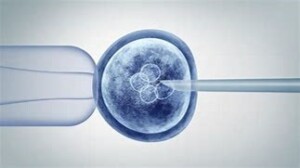Written by A. Hammouda: “CRISPR embryo errors can be underestimated” is a conclusion drawn by the research published in Nature Communications a few days ago. There are still trials to push the approval of human embryo gene editing, even after the world-wide condemnation of the trial conducted in China and after the leading scientist has served his time in prison. Advocates claim that the procedure is justified and safe. They claim that errors can be detected, and only sound embryos are the ones to be implanted. It seems that this claim is not true after all.
What are CRISPR embryo errors?
Although the CRISPR gene editing technique has proved its usefulness in making various genetic manipulations and treating some genetic diseases, there are still potential side effects of the procedure. Errors can occur at the targeted genes as well as off-target sites. The technique involves targeted breaking of the DNA and allowing DNA repair mechanisms to produce the desired effect. One cannot imagine that this can be error-free.
Repair of double-strand breaks induced in preimplantation human embryos may lead to a variety of alterations, including large deletions and small insertions or deletions. We can only hope that the unintended outcome is detected and eliminated and only the desired outcome is allowed to continue. With human embryos, this should be one hundred percent accurate and completed before implantation. Lack of accuracy is one reason why human embryo gene editing is not authorized till now.
What did the new research prove about CRISPR embryo errors?
It is not possible to fully analyze a small sample from the preimplantation embryo unless it is subjected to whole genome amplification. The process of whole genome amplification can introduce artifacts, including coverage nonuniformity, amplification biases, and allelic dropouts at the target site.
This new research proved that allelic dropout, defined as false positive deletions or loss of heterozygosity, is a common whole genome amplification outcome limiting genotyping accuracy in human preimplantation embryos. Pre-existing heterozygous loci appear as homozygous after whole genome amplification. Current sequencing and computational methods are not able to solve this issue.
Implications of CRISPR embryo errors underestimation
The findings of the new study emphasize how little we know about editing the genome. We are still not sure about how cells respond to the DNA damage that CRISPR induces. We still have a lot of work to do before daring to legalize gene editing of preimplantation human embryos.
Sources:
Limitations of gene editing assessments in human preimplantation embryos | Nature Communications
Research Suggests Errors Could Be Higher than Expected in Gene Edited Embryos
See also:
Make People Better – CRISPR Babies
Go to the News Board
